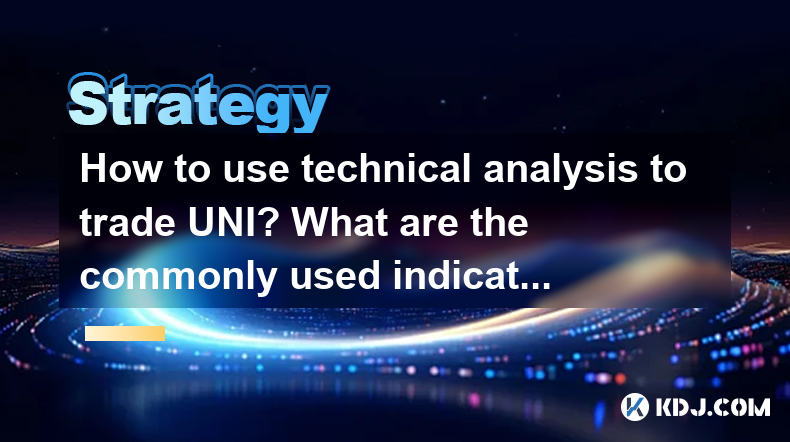-
 Bitcoin
Bitcoin $118900
0.42% -
 Ethereum
Ethereum $3710
-2.88% -
 XRP
XRP $3.513
-2.96% -
 Tether USDt
Tether USDt $1.000
-0.01% -
 Solana
Solana $203.0
3.65% -
 BNB
BNB $765.5
-1.29% -
 USDC
USDC $0.9998
0.00% -
 Dogecoin
Dogecoin $0.2671
-4.18% -
 Cardano
Cardano $0.8817
-3.63% -
 TRON
TRON $0.3139
-0.64% -
 Hyperliquid
Hyperliquid $44.34
-5.45% -
 Stellar
Stellar $0.4637
-4.08% -
 Sui
Sui $3.908
-2.59% -
 Chainlink
Chainlink $19.34
-2.62% -
 Hedera
Hedera $0.2712
-3.77% -
 Avalanche
Avalanche $24.97
-4.13% -
 Bitcoin Cash
Bitcoin Cash $519.8
-1.48% -
 Shiba Inu
Shiba Inu $0.00001518
-3.74% -
 Litecoin
Litecoin $115.6
-2.21% -
 Toncoin
Toncoin $3.460
3.68% -
 UNUS SED LEO
UNUS SED LEO $8.977
-0.07% -
 Polkadot
Polkadot $4.460
-2.96% -
 Uniswap
Uniswap $10.53
-5.43% -
 Ethena USDe
Ethena USDe $1.001
0.01% -
 Monero
Monero $323.6
-0.36% -
 Pepe
Pepe $0.00001379
-2.60% -
 Bitget Token
Bitget Token $4.772
-3.90% -
 Dai
Dai $0.9999
0.00% -
 Aave
Aave $307.5
-6.66% -
 Bittensor
Bittensor $441.8
0.84%
How to use technical analysis to trade UNI? What are the commonly used indicators
Use technical analysis to trade UNI by studying price data and using indicators like moving averages, RSI, Bollinger Bands, and MACD for informed trading decisions.
Apr 30, 2025 at 09:42 am

Trading UNI (Uniswap) using technical analysis involves studying historical price data and market statistics to predict future price movements. This approach relies heavily on the use of technical indicators, which are mathematical calculations based on the price, volume, or open interest of a security. In this article, we will explore how to effectively use technical analysis to trade UNI, focusing on commonly used indicators and their application.
Understanding Technical Analysis
Technical analysis is a method used by traders to evaluate investments and identify trading opportunities by analyzing statistical trends gathered from trading activity, such as price movement and volume. Unlike fundamental analysis, which looks at a company's financial statements and economic indicators, technical analysis focuses solely on the price movements of the asset itself.
For trading UNI, technical analysis can help traders understand market sentiment and potential price movements. By using various indicators, traders can make more informed decisions about when to buy or sell UNI.
Setting Up Your Trading Environment
Before diving into specific indicators, it's crucial to set up a proper trading environment. Here are the steps to get started:
- Choose a reliable trading platform: Select a platform that supports UNI trading and offers robust charting tools. Popular options include Binance, Coinbase Pro, and Kraken.
- Configure your chart: Set up your chart to display the necessary time frames (e.g., 1-minute, 5-minute, 1-hour, and daily) and customize the appearance to your preference.
- Add indicators: Most trading platforms allow you to add technical indicators to your chart. Familiarize yourself with the platform's interface to add and adjust these indicators.
Commonly Used Indicators for Trading UNI
There are numerous technical indicators available, but some are particularly popular among cryptocurrency traders. Here are the most commonly used indicators for trading UNI:
Moving Averages (MA)
Moving averages are one of the simplest yet effective indicators. They smooth out price data to create a single flowing line, making it easier to identify the direction of the trend.
- Simple Moving Average (SMA): The SMA is calculated by adding up the closing prices over a certain number of periods and then dividing by that number. For example, a 50-day SMA adds up the closing prices of the last 50 days and divides by 50.
- Exponential Moving Average (EMA): The EMA gives more weight to recent prices, making it more responsive to new information. It's calculated using a formula that incorporates a smoothing factor.
To use moving averages for trading UNI:
- Identify the trend: When the price is above the moving average, it's generally considered a bullish signal. When the price is below, it's bearish.
- Look for crossovers: A bullish crossover occurs when a shorter-term moving average (e.g., 20-day EMA) crosses above a longer-term moving average (e.g., 50-day EMA). A bearish crossover is the opposite.
Relative Strength Index (RSI)
The Relative Strength Index (RSI) is a momentum oscillator that measures the speed and change of price movements. It ranges from 0 to 100 and is typically used to identify overbought or oversold conditions.
- Overbought: An RSI above 70 suggests that UNI may be overbought and due for a price correction.
- Oversold: An RSI below 30 indicates that UNI may be oversold and could be due for a price rebound.
To use RSI for trading UNI:
- Monitor RSI levels: Pay attention to when the RSI enters overbought or oversold territory.
- Look for divergences: If the price of UNI is making new highs while the RSI is not, this could signal a potential reversal.
Bollinger Bands
Bollinger Bands consist of a middle band being an N-period simple moving average, an upper band at K standard deviations above the middle band, and a lower band at K standard deviations below the middle band.
- Volatility: The width of the Bollinger Bands can indicate the volatility of UNI. Narrow bands suggest low volatility, while wide bands indicate high volatility.
- Price action: When the price touches the upper band, it may be overbought, and when it touches the lower band, it may be oversold.
To use Bollinger Bands for trading UNI:
- Identify price extremes: Look for price touches on the upper or lower bands as potential entry or exit points.
- Watch for squeezes: A Bollinger Band squeeze, where the bands come closer together, can signal a period of low volatility that may precede a significant price move.
MACD (Moving Average Convergence Divergence)
The MACD is a trend-following momentum indicator that shows the relationship between two moving averages of a security’s price.
- MACD Line: The MACD line is calculated by subtracting the 26-period EMA from the 12-period EMA.
- Signal Line: The signal line is a 9-period EMA of the MACD line.
- Histogram: The histogram represents the difference between the MACD line and the signal line.
To use MACD for trading UNI:
- Identify crossovers: A bullish crossover occurs when the MACD line crosses above the signal line, suggesting a potential buying opportunity. A bearish crossover is the opposite.
- Analyze the histogram: An increasing histogram indicates growing momentum, while a decreasing histogram suggests waning momentum.
Combining Indicators for Better Results
While each indicator can provide valuable insights on its own, combining them can offer a more comprehensive view of the market. Here's how to use multiple indicators together for trading UNI:
- Confirm signals: Use one indicator to confirm the signal of another. For example, if the RSI indicates an oversold condition, look for a bullish MACD crossover to confirm the potential for a price increase.
- Diversify your approach: Different indicators may work better in different market conditions. Use a mix of trend-following (e.g., moving averages) and momentum indicators (e.g., RSI, MACD) to cover various scenarios.
Practical Example of Trading UNI Using Technical Analysis
Let's walk through a hypothetical example of using technical analysis to trade UNI:
- Identify the trend: Start by looking at the moving averages. If the 50-day SMA is trending upward and the price is above it, this suggests a bullish trend.
- Confirm with RSI: Check the RSI to see if it's in oversold territory (below 30). If it is, this could indicate a potential buying opportunity.
- Watch for MACD crossover: Monitor the MACD for a bullish crossover, where the MACD line crosses above the signal line. This could further confirm the buying signal.
- Set entry and exit points: Based on the above indicators, you might decide to enter a long position when the RSI is oversold and the MACD shows a bullish crossover. Set a stop-loss below the recent low to manage risk.
- Monitor Bollinger Bands: Use the Bollinger Bands to gauge volatility and potential price extremes. If the price touches the lower band, it could be a good entry point, and if it touches the upper band, it might be time to consider taking profits.
Frequently Asked Questions
Q: Can technical analysis guarantee profits when trading UNI?
A: No, technical analysis cannot guarantee profits. It is a tool to help traders make more informed decisions, but it does not predict the future with certainty. Market conditions, news events, and other factors can impact the price of UNI, so it's important to use technical analysis in conjunction with other forms of analysis and risk management.
Q: How often should I check my technical indicators when trading UNI?
A: The frequency of checking technical indicators depends on your trading style. Day traders might check their indicators multiple times throughout the day, while swing traders might only need to check them once or twice a day. It's important to find a balance that suits your strategy and does not lead to overtrading.
Q: Are there any other technical indicators I should consider for trading UNI?
A: Yes, there are many other technical indicators you can consider, such as the Stochastic Oscillator, Fibonacci retracement levels, and the Average Directional Index (ADX). Each indicator has its strengths and weaknesses, so it's beneficial to experiment and find which ones work best for your trading style and the specific market conditions of UNI.
Q: How can I improve my skills in using technical analysis for trading UNI?
A: Improving your skills in technical analysis involves continuous learning and practice. Consider the following steps:
- Study: Read books and articles on technical analysis, and follow experienced traders who share their insights.
- Practice: Use a demo account to practice trading UNI without risking real money. This allows you to test different indicators and strategies.
- Analyze: Keep a trading journal to review your trades and learn from your successes and mistakes.
- Stay updated: Keep up with market news and updates related to UNI, as external factors can influence price movements and the effectiveness of technical analysis.
Disclaimer:info@kdj.com
The information provided is not trading advice. kdj.com does not assume any responsibility for any investments made based on the information provided in this article. Cryptocurrencies are highly volatile and it is highly recommended that you invest with caution after thorough research!
If you believe that the content used on this website infringes your copyright, please contact us immediately (info@kdj.com) and we will delete it promptly.
- SEC, Bitcoin, and Crypto: Navigating the Wild West of Digital Finance
- 2025-07-23 04:30:12
- Tyre Legalities, the 20p Test, and Expert Advice: Staying Safe on the Road
- 2025-07-23 04:50:12
- Liberty Head Double Eagle Proofs: A Golden Opportunity?
- 2025-07-23 04:55:12
- Solana NFTs Surge: Riding the Wave of Market Volume and NFT Hype
- 2025-07-23 04:30:12
- Stablecoin Market, US Treasuries, and Financial Risk: A Deep Dive
- 2025-07-23 05:00:13
- Wall Street Pepe (WEPE) and the Solana Meme Coin Mania: A New Era?
- 2025-07-23 03:30:13
Related knowledge

How to avoid common crypto investment mistakes?
Jul 13,2025 at 01:35am
Understanding the Risks of Crypto InvestmentInvesting in cryptocurrency can be highly rewarding, but it also comes with significant risks. One of the ...

What is a long-short crypto strategy?
Jul 15,2025 at 10:56am
Understanding the Basics of a Long-Short Crypto StrategyA long-short crypto strategy is an investment approach where traders simultaneously take long ...

What is a long-short crypto strategy?
Jul 11,2025 at 01:28pm
Understanding the Basics of Long-Short Crypto StrategyA long-short crypto strategy is an investment approach where traders take both long and short po...

How to use the RSI indicator for crypto?
Jul 12,2025 at 03:56pm
Understanding the RSI Indicator in Cryptocurrency TradingThe Relative Strength Index (RSI) is a momentum oscillator used to measure the speed and chan...

Is copy trading a good strategy for crypto beginners?
Jul 12,2025 at 08:28am
Understanding Copy Trading in the Cryptocurrency MarketCopy trading is a strategy where novice traders replicate the trades of experienced investors a...

How to build a crypto portfolio with $1000?
Jul 13,2025 at 08:14pm
Understanding the Basics of Cryptocurrency InvestmentBuilding a crypto portfolio with $1000 starts with understanding the fundamentals of cryptocurren...

How to avoid common crypto investment mistakes?
Jul 13,2025 at 01:35am
Understanding the Risks of Crypto InvestmentInvesting in cryptocurrency can be highly rewarding, but it also comes with significant risks. One of the ...

What is a long-short crypto strategy?
Jul 15,2025 at 10:56am
Understanding the Basics of a Long-Short Crypto StrategyA long-short crypto strategy is an investment approach where traders simultaneously take long ...

What is a long-short crypto strategy?
Jul 11,2025 at 01:28pm
Understanding the Basics of Long-Short Crypto StrategyA long-short crypto strategy is an investment approach where traders take both long and short po...

How to use the RSI indicator for crypto?
Jul 12,2025 at 03:56pm
Understanding the RSI Indicator in Cryptocurrency TradingThe Relative Strength Index (RSI) is a momentum oscillator used to measure the speed and chan...

Is copy trading a good strategy for crypto beginners?
Jul 12,2025 at 08:28am
Understanding Copy Trading in the Cryptocurrency MarketCopy trading is a strategy where novice traders replicate the trades of experienced investors a...

How to build a crypto portfolio with $1000?
Jul 13,2025 at 08:14pm
Understanding the Basics of Cryptocurrency InvestmentBuilding a crypto portfolio with $1000 starts with understanding the fundamentals of cryptocurren...
See all articles

























































































